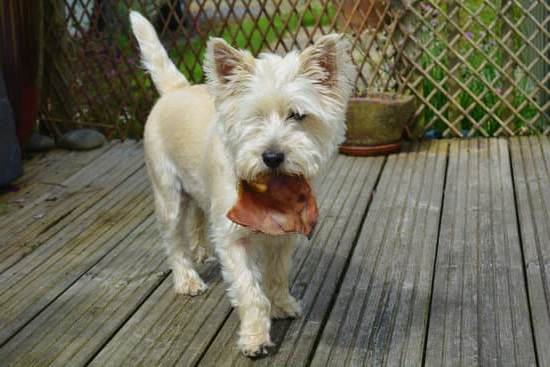What is an about turn in dog training? Training techniques play a crucial role in ensuring your furry companion’s obedience and behavior. Establishing effective communication with your pet is essential for a harmonious relationship. One technique that can greatly aid in this process is the about turn, a fundamental aspect of dog training.
An about turn is a maneuver where the handler turns 180 degrees to change direction while walking with their dog. This simple yet effective technique helps reinforce obedience and maintain focus during walks or training sessions. By incorporating about turns into your routine, you can strengthen the bond with your dog and improve their responsiveness to commands.
In this article, we will delve into the definition and purpose of about turns in dog training. Additionally, we will explore the benefits of incorporating this technique, provide a step-by-step guide on how to teach your dog an about turn, discuss common mistakes to avoid, highlight practical applications in real-life situations, offer troubleshooting tips for challenges encountered, and emphasize the positive impact of about turns on your dog’s behavior and obedience.
Stay tuned for valuable insights on enhancing your pet’s training experience.
The Fundamentals of Dog Training
Dog training is a crucial aspect of ensuring that your furry friend is well-behaved and responsive to your commands. One of the fundamental principles of dog training is establishing clear communication with your pet. This sets the foundation for a strong bond between you and your dog, making it easier to teach them new tricks and behaviors.
To effectively communicate with your dog during training sessions, it is essential to use consistent commands and signals. Dogs are creatures of habit and respond well to repetition and routine. By using the same verbal cues and hand signals each time you ask your dog to perform a task, they will quickly learn what is expected of them.
In addition to verbal commands and hand signals, body language also plays a significant role in communicating with your dog. Dogs are highly attuned to human body language, so maintaining a calm and assertive posture during training sessions can help convey your expectations clearly. Consistency in both verbal cues and body language will make it easier for your dog to understand what you want from them, leading to successful training sessions.
- Consistent verbal commands
- Use of hand signals
- Maintaining calm assertive posture
What Is an About Turn in Dog Training
An About Turn in dog training is a fundamental obedience technique that involves the handler making a quick 180-degree turn while walking with their dog on a leash. This maneuver helps to establish clear communication between the owner and the pet, reinforcing the concept of following the handler’s lead and paying attention to cues.
The purpose of an About Turn is to teach dogs to stay focused on their handler, improve their responsiveness to commands, and enhance their overall obedience skills.
Benefits of incorporating About Turns in your training routine include promoting mental stimulation for your dog, increasing their focus and attention during training sessions, and strengthening the bond between you and your pet. By practicing this exercise regularly, you can also improve your dog’s leash manners, impulse control, and ability to navigate different environments with ease. Additionally, mastering the About Turn can help prevent common behavior issues such as pulling on the leash or getting distracted easily during walks.
To teach your dog an About Turn effectively, follow these steps:
- Start by walking with your dog on a loose leash.
- As you approach a corner or obstacle, make a sharp 180-degree turn in the opposite direction.
- Use verbal cues such as “turn” or “about” to signal the movement to your dog.
- Reward your pet with treats or praise when they successfully follow your lead and complete the turn.
- Practice this exercise in different settings and gradually increase the difficulty level by adding distractions or increasing speed.
Remember that consistency is key when implementing About Turns in training sessions. Avoid common mistakes such as yanking on the leash, using harsh corrections, or rushing through the exercise too quickly. By being patient, positive, and rewarding good behavior, you can help your dog understand and master this important obedience skill.
Benefits of Incorporating About Turns in Your Training Routine
In the realm of dog training, incorporating about turns into your routine can significantly enhance the effectiveness of your sessions. An about turn is a simple yet powerful maneuver that involves quickly changing direction while walking with your dog on a leash. This exercise not only helps to improve your pet’s obedience but also strengthens the bond between you and your furry companion.
One of the key benefits of integrating about turns into your training regimen is that it promotes mental stimulation for your dog. By introducing new commands and movements, you are challenging their cognitive abilities and keeping them engaged during training sessions.
This can prevent boredom, which is often a leading cause of behavioral issues in dogs. Additionally, practicing about turns helps to build focus and impulse control in your pet, as they learn to react promptly to sudden changes in direction.
Moreover, incorporating about turns in your training routine can improve your dog’s responsiveness to commands and cues. By mastering this exercise, your pet will become more attuned to your movements and signals, making it easier to communicate effectively with them.
This increased responsiveness translates into better overall obedience and cooperation from your furry friend. Overall, practicing about turns is a valuable tool for enhancing communication between you and your dog, leading to a harmonious relationship built on trust and understanding.
Step-by-Step Guide on How to Teach Your Dog an About Turn
When it comes to training your dog, incorporating a variety of techniques can be beneficial in ensuring their obedience and overall behavior. One important technique that can help in this process is the about turn. But what exactly is an about turn in dog training?
An about turn involves a quick change of direction while walking with your dog, typically done at a 180-degree angle. This maneuver helps to teach your dog to pay attention to you and follow your lead effectively.
The purpose of teaching an about turn to your dog is to reinforce their focus on you as the handler, improve their leash manners, and enhance their overall responsiveness during walks or training sessions. By implementing about turns into your routine, you are providing clear signals to your dog about when they need to adjust their movement and pace according to yours.
This not only strengthens the bond between you and your pet but also establishes you as the leader in a positive and effective way.
To successfully teach your dog an about turn, start by practicing in a quiet and familiar environment with minimal distractions. Begin by walking forward with your dog on a loose leash, then make a sudden but gentle turn when they least expect it. Use treats or verbal cues to encourage them to follow suit and stay close to you.
Repeat this process consistently until your dog learns to anticipate the turns and responds promptly. With patience, practice, and positive reinforcement, you can master the art of teaching your furry friend about turns for better obedience and control.
Common Mistakes to Avoid When Implementing About Turns in Training
When incorporating about turns in your dog training routine, it is important to be aware of common mistakes that pet owners may unknowingly make. These mistakes can hinder the effectiveness of the training and potentially confuse your furry companion. By understanding these pitfalls and actively working to avoid them, you can ensure that your dog successfully learns and executes about turns with ease.
Overcomplicating the Process
One common mistake that many dog owners make when implementing about turns in training is overcomplicating the process. Keep in mind that dogs respond best to clear, concise commands and consistent reinforcement. Avoid using overly complex language or gestures when teaching about turns. Instead, stick to simple, straightforward cues that are easy for your dog to understand. By keeping the training process simple and accessible, you can set your pet up for success.
Lack of Consistency
Consistency is key when it comes to dog training, including teaching about turns. One mistake to avoid is being inconsistent in your approach or expectations during training sessions. Make sure that you use the same commands and signals each time you practice about turns with your pet. Additionally, be consistent in providing rewards and positive reinforcement for correct behavior. This will help reinforce the desired behavior and prevent confusion or frustration on your dog’s part.
Skipping Basic Training Steps
Another mistake to watch out for is skipping essential foundational training steps before introducing about turns. Before diving into more advanced maneuvers like about turns, make sure that your dog has mastered basic obedience commands such as sit, stay, and heel.
Building a strong foundation of obedience skills will make it easier for your pet to understand and execute about turns effectively. Patience and persistence in reinforcing these fundamental behaviors will ultimately lead to success in more complex training techniques like about turns.
Practical Applications of About Turns in Real-Life Situations
About turns are a valuable tool in dog training that can be applied to real-life situations for better obedience and control over your pet. One practical application of about turns is during walks or outings with your dog.
When your furry companion gets distracted or starts pulling on the leash, performing an about turn can help regain their focus and redirect their attention back to you. This simple yet effective technique reinforces the importance of staying close and paying attention to commands.
Another real-life scenario where about turns can be beneficial is during social interactions with other dogs. If your dog becomes overly excited or agitated when meeting new canine friends, incorporating about turns can help calm them down and prevent any potential conflicts. By teaching your dog to respond to about turns promptly, you can manage their behavior in various social settings and ensure a positive interaction with other pets.
Additionally, about turns can be used to address obedience issues such as excessive barking or jumping on guests. When your dog exhibits undesirable behavior, performing an about turn followed by a command like “sit” or “stay” reinforces the idea that certain actions are not appropriate. Consistency in applying about turns in these situations will help establish boundaries and improve your dog’s overall manners and behavior.
| Benefits | Applications |
|---|---|
| Enhances obedience and control | During walks or outings |
| Promotes positive social interactions | With other dogs |
| Addresses obedience issues effectively | When exhibiting undesirable behaviors like barking or jumping |
Troubleshooting
Identifying Common Challenges
When incorporating about turns into your dog training routine, it is not uncommon to encounter challenges along the way. One common issue that many pet owners face is resistance from their dogs when attempting to execute the turn. This resistance can stem from a lack of understanding or confusion on the part of the dog. Additionally, some dogs may show signs of frustration or impatience during the training process, making it difficult to progress smoothly.
Addressing Resistance and Frustration
To address these challenges effectively, it is essential to remain patient and consistent in your approach. If your dog is showing signs of resistance or frustration during about turn training, take a step back and reassess your methods. Consider breaking down the training into smaller, more manageable steps to help your dog understand what is expected. Positive reinforcement techniques, such as using treats or praise, can also help motivate your dog and make the training experience more enjoyable for them.
Seeking Professional Guidance
If you find yourself struggling to overcome challenges in teaching about turns to your dog, don’t hesitate to seek professional guidance. Dog trainers or behavior specialists have the knowledge and experience to assess your specific situation and provide tailored solutions to address any obstacles you may be facing.
By working closely with a professional, you can develop a customized training plan that meets both you and your dog’s needs, ultimately leading to successful about turn integration in your obedience training routine.
Conclusion
In conclusion, understanding the concept of an about turn in dog training can greatly enhance the communication and bond between you and your pet. By incorporating this technique into your training routine, you not only improve your dog’s obedience but also instill a sense of focus and discipline that can positively impact their behavior in various situations.
The purpose of an about turn is to teach your dog to pay attention to you, follow your lead, and change direction smoothly and promptly.
By teaching your dog how to perform an about turn effectively, you are setting a strong foundation for further training exercises and commands. This fundamental skill can help improve your dog’s overall responsiveness and willingness to follow your instructions, creating a harmonious relationship built on trust and respect. Additionally, the benefits of incorporating about turns extend beyond obedience training, as it also provides mental stimulation for your furry companion.
As you navigate through the process of teaching about turns to your dog, remember to be patient, consistent, and positive in your approach. Avoid common mistakes such as rushing the learning process or using harsh corrections that may hinder your pet’s progress.
Instead, focus on rewarding good behavior, offering praise and encouragement, and addressing any challenges with patience and perseverance. With dedication and proper guidance, incorporating about turns into your training routine can result in a well-behaved and obedient canine companion.
Frequently Asked Questions
What Is a Right About Turn in Dog Training?
A right about turn in dog training typically refers to a specific command or maneuver where the dog is expected to make a sharp turn to the right while walking or heeling. This skill is commonly taught as part of basic obedience training to help improve the dog’s focus and responsiveness to commands.
What Is About Turn Dog Walking?
About turn dog walking involves the dog handler abruptly changing direction during walks with their canine companion. This technique helps reinforce the walk leader’s position and control over the dog, as well as providing mental stimulation for the dog by introducing variety into their daily routine.
What Is a Canine About Turn?
A canine about-turn refers to a movement or behavior exhibited by a dog where they quickly pivot around in response to a cue from their handler or trainer. This skill is often practiced in obedience training sessions and can be useful for teaching dogs how to follow commands promptly and precisely, enhancing their overall responsiveness and agility.

Welcome to the blog! I am a professional dog trainer and have been working with dogs for many years. In this blog, I will be discussing various topics related to dog training, including tips, tricks, and advice. I hope you find this information helpful and informative. Thanks for reading!





